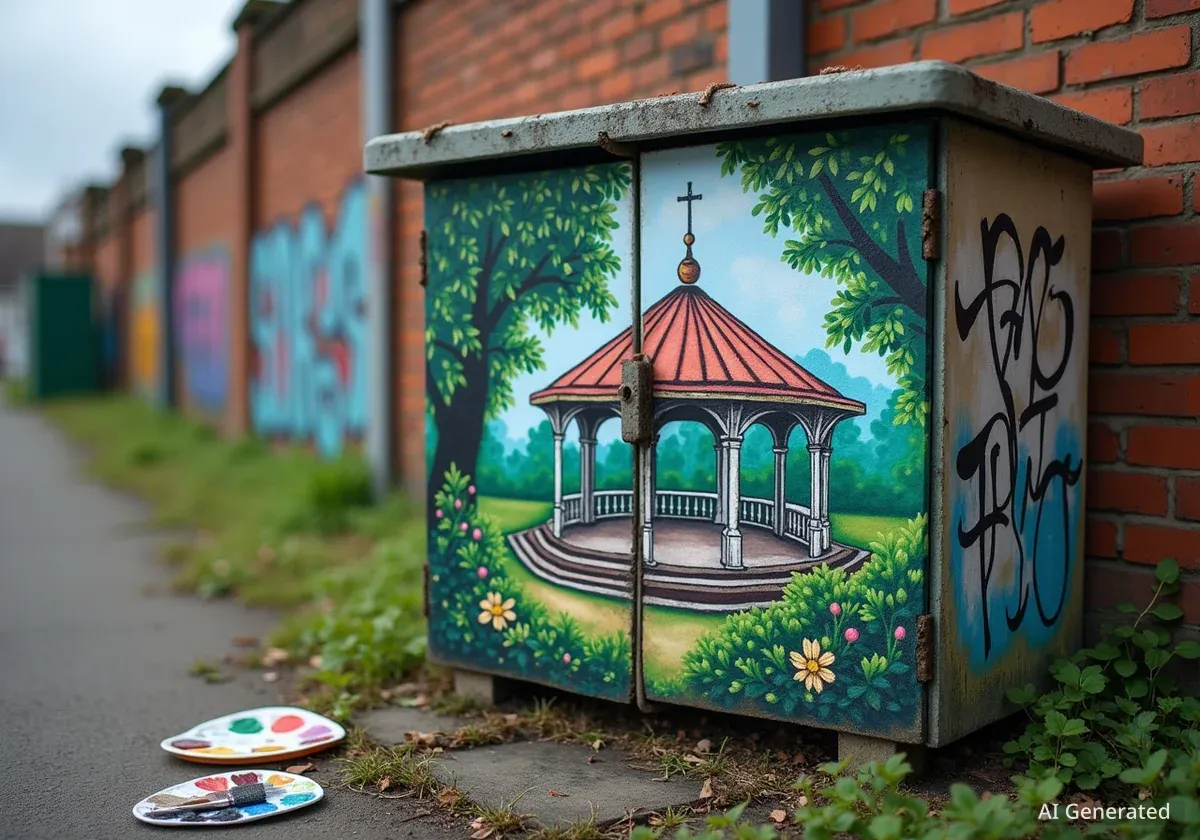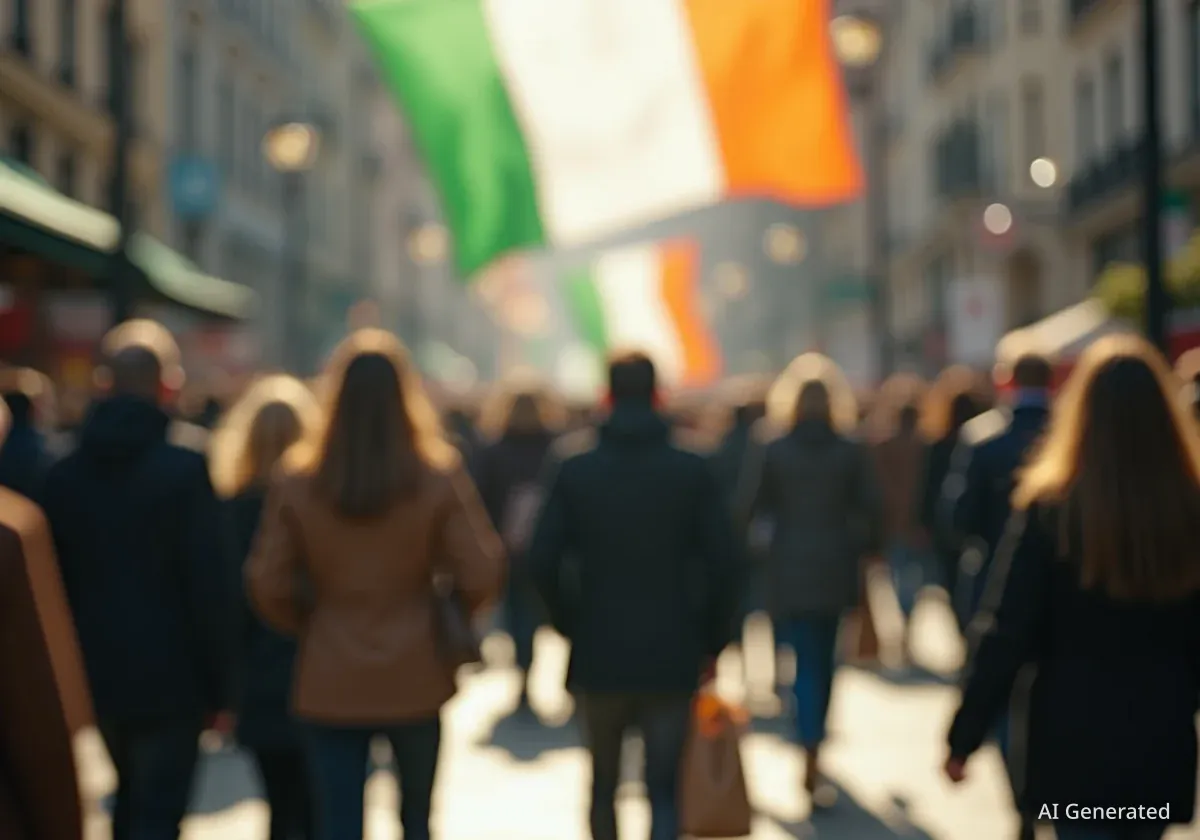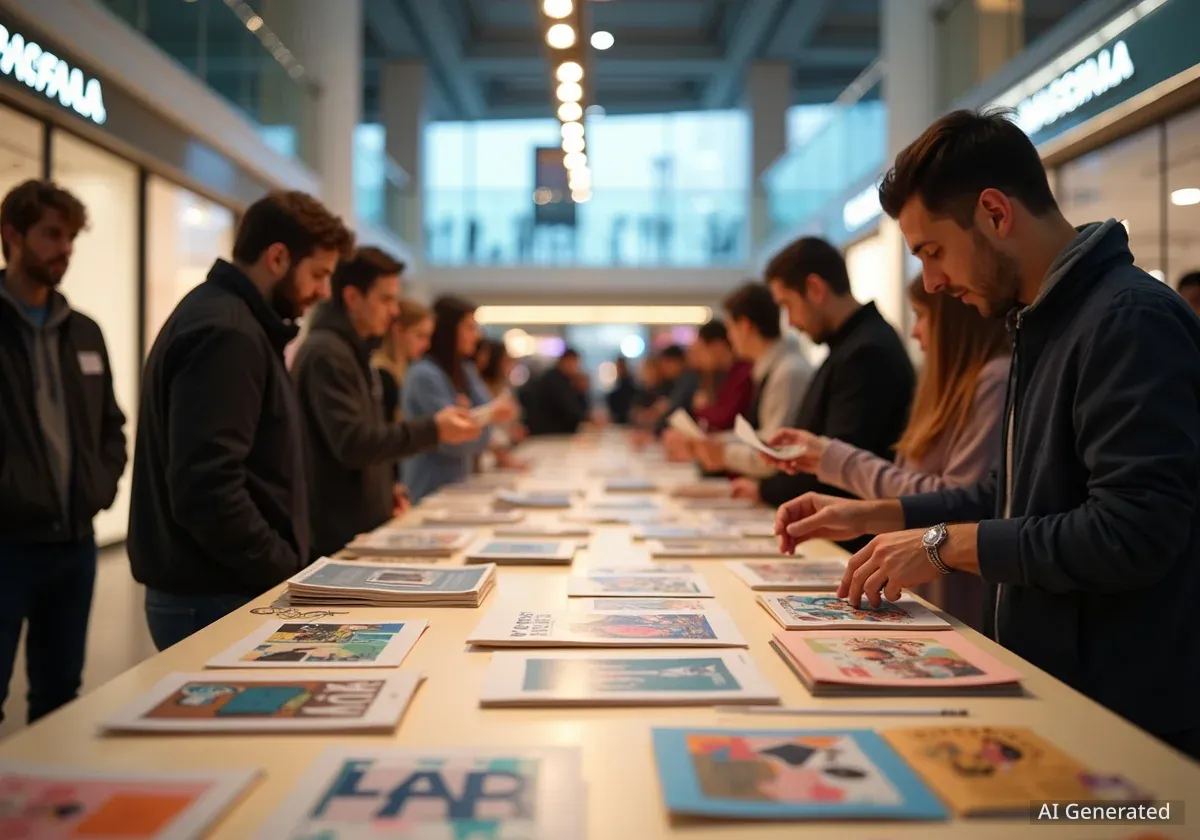A gas substation near Sefton Park, once known as Liverpool's most frequently graffitied utility box, has been completely transformed into a public work of art. A local artist has painted a detailed mural of the park's historic Victorian bandstand, successfully deterring vandalism and brightening the community space.
Key Takeaways
- A gas substation owned by Cadent Gas, located near Sefton Park's lake entrance, was the most graffitied in Liverpool.
- Recent architecture graduate Sarah Coates, 21, painted a detailed mural of the park's Grade II listed bandstand on the box.
- The project was undertaken to improve the local environment and prevent recurring graffiti.
- Since the mural's completion, the substation has remained free of vandalism.
A Creative Solution to a Persistent Problem
For years, a green gas substation near the entrance to Sefton Park's lake served as a constant target for graffiti. According to its owner, Cadent Gas, the utility box was the most defaced of its kind in the entire city. Efforts to clean and repaint the surface were consistently short-lived, with new spray paint appearing almost immediately.
This cycle of vandalism has now been broken thanks to the initiative of a local artist. Sarah Coates, a 21-year-old who recently graduated from Liverpool John Moores University with a degree in architecture, decided to apply her creative skills to solve the problem. Living nearby, she saw an opportunity to turn a persistent eyesore into something the community could appreciate.
The Challenge of Urban Blight
Utility boxes, substations, and other public infrastructure are common targets for graffiti. While some street art is celebrated, unsolicited tagging often contributes to a sense of neglect in public spaces. Repetitive cleaning and repainting can be a significant and ongoing cost for utility companies and local councils.
The Artist Behind the Transformation
Sarah Coates, whose main artistic focus had previously been on smaller paintings, took on this mural as her first large-scale public project. The idea was initially suggested by her father, prompting her to approach Cadent Gas with a proposal to paint one of their substations.
"Art has always been my thing but I normally do smaller paintings, this was my first time doing something more large-scale," Sarah explained. "My dad suggested it would be an interesting idea to do a mural so we got in touch with Cadent Gas and asked about their gas substations."
Upon learning that this particular box was the most problematic in Liverpool, she saw a dual purpose for her work. The goal was not just to create art but to provide a practical deterrent.
"We thought that by painting on it, it would not just brighten it up and make the area look nicer but also hopefully mean it wouldn’t be graffitied on again," she added.
A Meticulous Process and Positive Results
The project was a significant undertaking, completed over several months during Sarah's final year at university. She dedicated a couple of days each month to meticulously painting the scene. The process itself highlighted the persistence of the graffiti problem.
"I noticed that as I was painting people would still tag it but around where I’d painted," Sarah recalled. "The more of the space I filled, the less was tagged."
This observation proved correct. Since she finished the detailed artwork, the substation has been left untouched by vandals. Her creative intervention has proven more effective than repeated cycles of cleaning. The intricate detail of her work, which sets it apart from typical street art, may have contributed to this success.
A Painter's Approach to Street Art
Unlike many muralists who use spray paint for large-scale works, Sarah Coates used a fine art technique. "Instead of spray paint or a big brush I was using a tiny paintbrush to paint it, so it’s basically how a painting would be on a canvas but outdoors," she noted. This method allowed for a high level of detail but also required significantly more time and precision.
Choosing a Landmark with Local Meaning
Cadent Gas gave Sarah creative freedom over the mural's subject. Her initial idea was to depict the famous Palm House in Sefton Park, but she ultimately chose another of the park's historic structures: the bandstand.
"I thought the bandstand didn’t get quite as much attention even though it’s got a lot of history," she said. The decision resonated deeply with the local community. The Grade II listed Victorian bandstand is a cherished landmark, and its depiction sparked warm interactions with people passing by.
The choice of a local landmark appears to have fostered a sense of community ownership over the artwork, further discouraging vandalism.
"I had people walking past while I was painting saying ‘I used to play on that with my children when they were younger’ and talking about how it used to look. I had such warm conversations with passers-by about how much it meant to them which made me smile."
Future Aspirations for Public Art
The success of the Sefton Park mural has inspired Sarah to seek out more opportunities to create public art. She shares her work, including this project, through her Instagram account, Redbrush Murals. Her focus remains on improving public spaces and bringing a small piece of joy to everyday life.
"I’m just happy making places a bit nicer for people and I hope this painting brings a small amount of joy to everyone who passes it," she concluded. The project stands as a powerful example of how individual creativity can provide effective, community-focused solutions to civic issues like urban blight.





